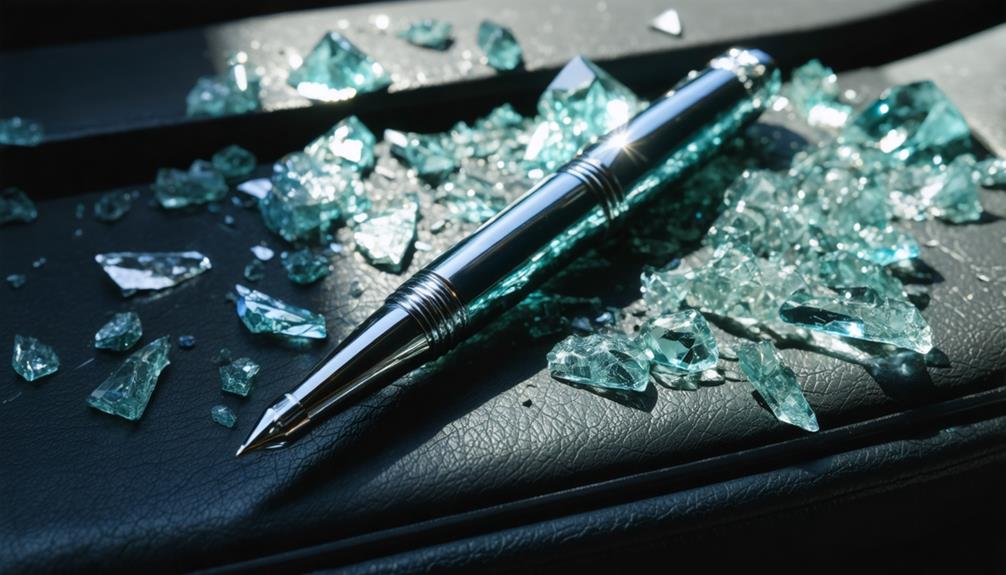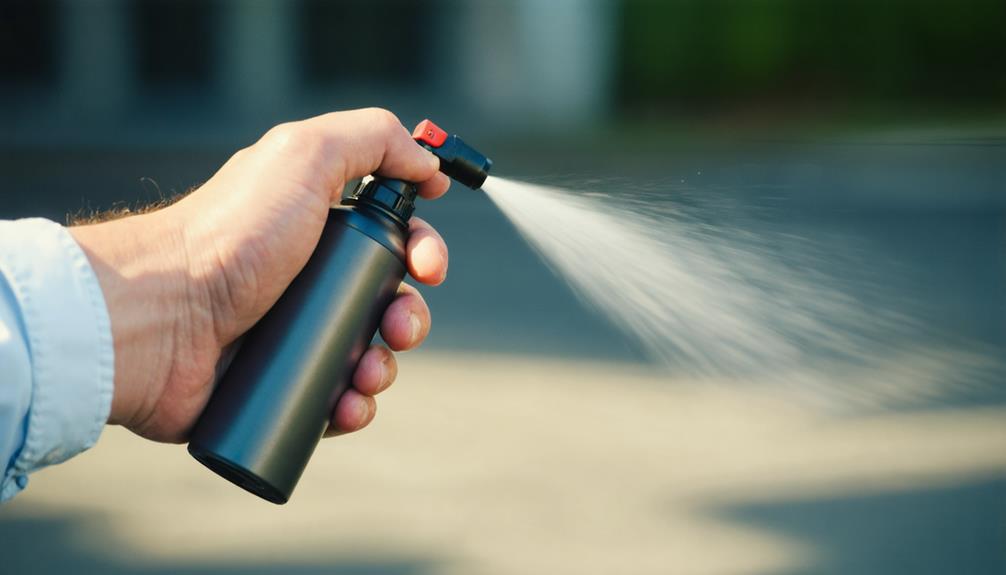
Brainstorm Security Shop

For Orders Over $199

On Any Of Our Products

Details On Refund Page
When it comes to using pepper spray, knowing how to deploy it effectively can make all the difference in a high-stress situation. You should familiarize yourself with the spray’s mechanism, ensuring you can act quickly if needed. Remember to hold the canister firmly and aim for the attacker’s eyes to maximize its impact. However, there’s much more to consider—like legal aspects and proper maintenance—that can affect your preparedness. Understanding these details can enhance your confidence and safety when it matters most. What else should you keep in mind?
Understanding the components of pepper spray is crucial for effective use and safety. When you pick up a canister, you’ll notice that two main factors significantly influence its performance: spray pressure and the active ingredient.
Spray pressure refers to the force with which the spray is expelled from the canister. Higher spray pressure typically means a more powerful stream that can reach further distances, allowing you to keep your distance from potential threats. This feature is essential, as it can provide you with a crucial advantage during an emergency.
The active ingredient in pepper spray is usually oleoresin capsicum (OC), derived from hot peppers. This compound causes an intense burning sensation when it comes into contact with the eyes, skin, or respiratory system. Understanding the potency of the active ingredient can help you gauge how effective your spray will be in deterring an attacker.
Selecting the right pepper spray can make a significant difference in your personal safety. When you’re choosing a product, start by considering the brand comparison. Some brands are known for their reliability and effectiveness, while others mightn’t deliver the same results. Look for products that have good reviews and a solid reputation among users.
Next, think about the spray range. You want a pepper spray that allows you to maintain distance from an attacker. Most sprays have a range of 8 to 15 feet, but some can reach even longer distances. A longer spray range gives you a safer buffer zone, helping you avoid potential harm.
Also, consider the spray pattern. Some sprays come in a stream, while others offer a fog or cone spray. A stream is good for accuracy, but a fog can cover a wider area, which might be beneficial in chaotic situations.
Ultimately, your choice should reflect your personal needs and comfort level. Invest time in researching different options, and you’ll find a pepper spray that enhances your safety and peace of mind.
To keep your pepper spray effective, proper storage and maintenance are essential. Following a few simple storage tips can ensure your spray is ready when you need it. First, always store your pepper spray in a cool, dry place, away from direct sunlight and extreme temperatures. High heat can cause the canister to explode, while cold can affect its effectiveness.
Here are three key maintenance tips:
When faced with a threatening situation, knowing how to use pepper spray effectively can make all the difference. First, familiarize yourself with your spray’s mechanism so you can deploy it quickly when needed. Hold the canister firmly with your thumb on the bottom and your index and middle fingers on the nozzle. This grip ensures stability and control.
Targeting accuracy is crucial. Aim for the attacker’s face, specifically the eyes, as this will maximize the spray’s effectiveness. It’s best to use short bursts rather than a continuous spray, as this helps maintain your aim while minimizing the risk of spray blowback.
Distance control is also essential. Pepper spray works best within a range of 6 to 12 feet, so make sure you keep that distance in mind. If the attacker is too close, you mightn’t have enough time to react. If possible, try to create space before deploying the spray.
Lastly, be aware of your surroundings. Wind direction can affect your spray’s trajectory, so position yourself accordingly to avoid any unintended consequences. With practice and awareness, you can use pepper spray effectively in a crisis.
Using pepper spray effectively also means understanding the legal landscape surrounding its use. Each state has its own laws regarding pepper spray, including restrictions on size, strength, and where you can carry it. Before you purchase or carry pepper spray, make sure you familiarize yourself with your state’s laws to avoid any legal issues.
Here are three key legal considerations to keep in mind:
Yes, you can use pepper spray for animal defense, but you should always take safety precautions. Ensure you’re targeting aggressive animals only and avoid harming pets or bystanders. Always check local laws regarding its use.
Pepper spray typically remains effective for three to four years if stored properly. Always check the expiration date on the canister, and ensure it’s kept in a cool, dry place to maintain its potency.
If you accidentally spray yourself, immediately rinse your eyes with water for 15-20 minutes. Use first aid methods like flushing the affected area and removing contaminated clothing. Seek medical help if symptoms persist.
There are legal restrictions when purchasing pepper spray. Many states require you to be at least 18, meaning minors can’t buy it. Always check local laws to ensure you’re complying for self-defense purposes.
Yes, freezing concerns do exist with pepper spray in cold temperatures. It can lose effectiveness, making it unreliable for animal defense. Always check the manufacturer’s guidelines to ensure it functions properly in extreme conditions.
